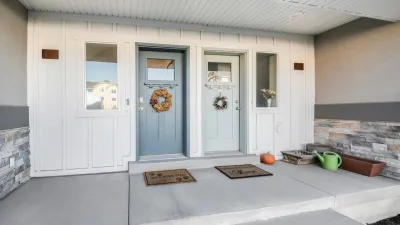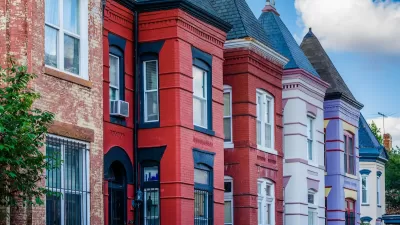A Los Angeles affordable-housing developer says the industry needs to focus more on keeping existing housing affordable.

As California’s governor pushes to streamline affordable housing projects and an upcoming L.A. ballot measure incentivizes affordable units in new developments, it's clear that many approaches to the state’s housing crisis have one thing in common: Their main concern is to create new housing.
But while production is necessary, it’s not the only way to increase the supply of affordable housing—nor is it necessarily the most efficient, one developer argues.
It could take years for California to rebuild its capacity to produce housing on a meaningful scale. In the meantime, John Given says, "We can have an immediate and long-term impact on housing affordability using the rental housing that already occupies much of our cities."
Given is vice chair of LINC Housing, a non-profit affordable housing developer. He has an ambitious vision: In the next 10 years, he hopes to see 20 percent of the rental housing in Los Angeles County operated by social investors with the mission of keeping it affordable or making it that way.
The proposal, in essence, works like this: A social investor buys an operating rental building and charges a mix of affordable and market-rate rents. Over time, tapping into social equity and various sources of public funds, they gradually convert every unit in the building to affordability.
Given elaborates on this business model in The Planning Report, where he also calls on state leaders to direct more funding to this purpose.
"Most operating housing stock is safe, decent, sanitary, and habitable—and a large portion of it is operated at below-market rates," he says. "Shouldn’t a significant portion of dedicated affordable housing funds be prioritized to ensure these units remain affordable?"
FULL STORY: Affordable Housing’s Elephant In The Room: Operating and Preserving Multi-Family Housing

Planetizen Federal Action Tracker
A weekly monitor of how Trump’s orders and actions are impacting planners and planning in America.

Congressman Proposes Bill to Rename DC Metro “Trump Train”
The Make Autorail Great Again Act would withhold federal funding to the system until the Washington Metropolitan Area Transit Authority (WMATA), rebrands as the Washington Metropolitan Authority for Greater Access (WMAGA).

The Simple Legislative Tool Transforming Vacant Downtowns
In California, Michigan and Georgia, an easy win is bringing dollars — and delight — back to city centers.

The States Losing Rural Delivery Rooms at an Alarming Pace
In some states, as few as 9% of rural hospitals still deliver babies. As a result, rising pre-term births, no adequate pre-term care and harrowing close calls are a growing reality.

The Small South Asian Republic Going all in on EVs
Thanks to one simple policy change less than five years ago, 65% of new cars in this Himalayan country are now electric.

DC Backpedals on Bike Lane Protection, Swaps Barriers for Paint
Citing aesthetic concerns, the city is removing the concrete barriers and flexposts that once separated Arizona Avenue cyclists from motor vehicles.
Urban Design for Planners 1: Software Tools
This six-course series explores essential urban design concepts using open source software and equips planners with the tools they need to participate fully in the urban design process.
Planning for Universal Design
Learn the tools for implementing Universal Design in planning regulations.
Smith Gee Studio
City of Charlotte
City of Camden Redevelopment Agency
City of Astoria
Transportation Research & Education Center (TREC) at Portland State University
US High Speed Rail Association
City of Camden Redevelopment Agency
Municipality of Princeton (NJ)





























